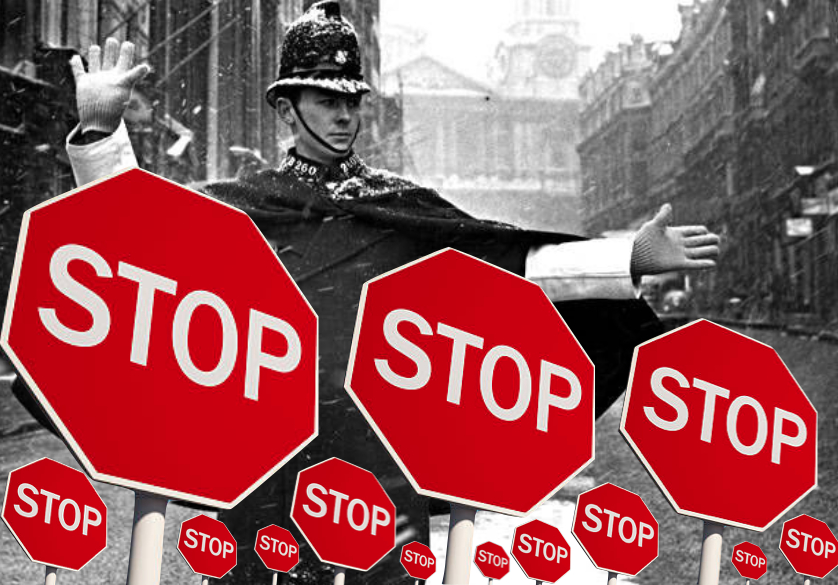Whether you prefer to walk, wheel, ride, or drive, you will recognise the red, octagonal sign meaning “Stop!” Most children, at most places in the world, have learned to recognise it from an early age. However, you’ve probably never stopped to wonder how this sign, this symbol, this red shape became so ubiquitous. Perhaps this brief history of the stop sign will provide some answers.
Permanent stop signs started appearing in Michigan, America’s erstwhile automotive heartland, in 1915 and were 2-foot, white, squares with black lettering. By 1922, they had spread, along with the personal automobile, around the country and required standardisation across the then 48 states. The octagon seems an odd choice of shape. In fact, that was the driving force behind the decision. It couldn’t be confused with any other sign from a distance in either direction. It was also easily identifiable at night before the introduction of reflective paint, with black lettering on a yellow (initially pink) background from 1924 to 1954.
Across the Atlantic, the European states of the League of Nations were endeavouring to standardise their own road traffic signs and signals. Stop signs themselves were not regulated in the 1926 International Convention relating to Road Traffic. Therefore, making use of the presence of numerous delegates in Geneva to sign several more exciting accords, a plucky subcommittee presented the 1931 Convention concerning the Unification of Road Signals. A sign, “consisting of a full [equilateral] triangle with the point downwards,” painted white or “light yellow” with a red border was to “[inform] the driver that he must give way to vehicles moving along the road he was coming to.” With ratification by all its major nations including the USSR, Europe’s closest analogue to a stop sign was, in appearance and function, a give way sign.
In the spirit of global reunification following the Second World War, the issue of universal traffic signs arose again in Geneva in 1949. Though this pedestrian movement towards international legal cohesion has been vastly overshadowed by the other treaties and protocols concluded there, the 1949 Geneva Protocol on Road Signs and Signals did create the first UN accepted “Stop at intersection” sign. Retaining the its colouring, the triangle was placed in a red circle and could be inscribed with the vernacular “stop” in black.
Now to Vienna in the Autumn of 1968. Most Europeans owned motor-vehicles, and those prosperous European communities enjoyed increasing mobility and international commerce. This occasioned the UN’s Vienna Convention on Road Signs and Signals. The convention adopted, for the same reasons the Americans had 46 years earlier, the octagonal stop sign. They also kept their own as alternatives. The US had changed the colouring to a red background, to match the increasingly common traffic light symbol, with white text that was more visible against it, and added a white border in 1954. The UN followed suit. Europe, and the remaining or recently relinquished English and French African colonies, adapted.
There’s still a slight twist: Australia isn’t a signatory to the Vienna Convention. We have, however, used octagonal stop signs since the 1940s. It was a yellow octagon with a black bar across the middle, inscribed in white with “Halt” until 1959, and then “Stop” until the adoption of the red sign in 1964. We probably adopted it because a yellow octagon would be recognizable to American soldiers in the 1940s, and kept it because it was distinctive and safe. And now I have reached my word count, a sign that I too should stop.
Words by Ed Taylor.
This article first appeared in print volume 88 edition 3 SOAP.

